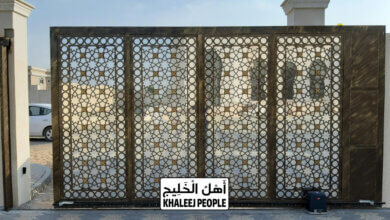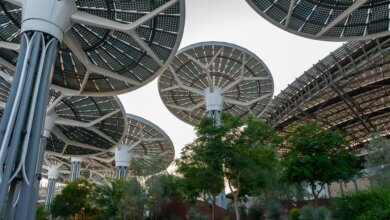Abu Dhabi Energy Project, UAE’s Sustainable Energy Revolution
Discover How Abu Dhabi is Pioneering Renewable Energy Solutions and Driving the UAE's Transition to a Sustainable, Green Future
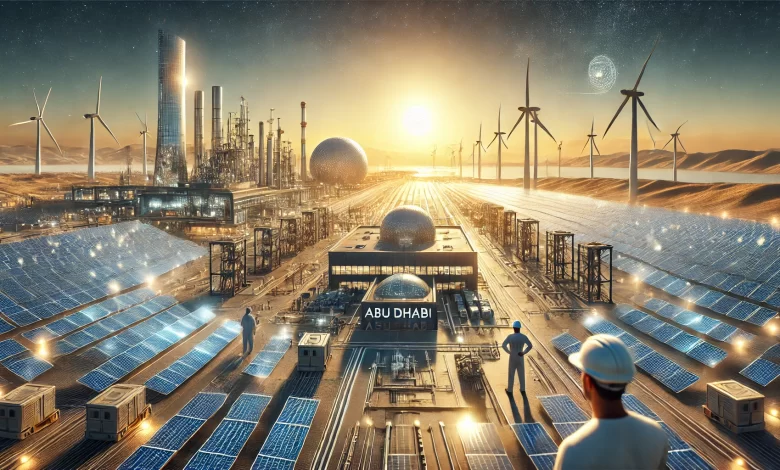
The Abu Dhabi energy project is a pivotal initiative in the United Arab Emirates (UAE) that reflects the country’s commitment to sustainability and renewable energy. As part of the UAE’s broader energy transition, Abu Dhabi has become a leader in developing innovative solutions to meet growing energy demands while minimizing environmental impact. The Abu Dhabi energy project encompasses multiple endeavors, from solar power to clean energy investments, aimed at ensuring a greener and more sustainable future. In this article, we will explore the various aspects of the Abu Dhabi energy project, its significance, and how it contributes to the global push for clean energy.
Abu Dhabi’s Vision for Sustainable Energy
The Abu Dhabi energy project is a manifestation of the UAE’s Energy Strategy 2050, which seeks to diversify energy sources and reduce reliance on fossil fuels. Abu Dhabi, as the capital of the UAE, plays a crucial role in realizing this vision. The government’s focus is on increasing the share of clean energy in the energy mix, reducing carbon emissions, and developing sustainable energy infrastructure.
The key pillars of Abu Dhabi’s energy project include renewable energy investments, energy efficiency measures, and international collaboration to promote clean energy solutions. With a strong emphasis on innovation and cutting-edge technology, Abu Dhabi is working to position itself as a global leader in sustainable energy.
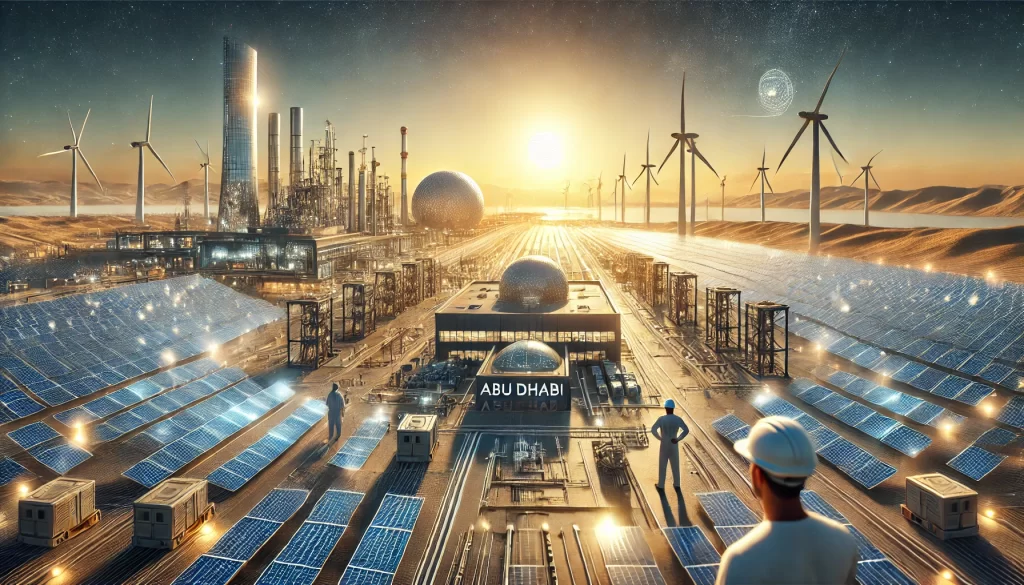
Masdar: A Leading Player in Abu Dhabi Energy Project
One of the most prominent components of the Abu Dhabi energy project is Masdar, also known as the Abu Dhabi Future Energy Company. Established in 2006, Masdar is at the forefront of the UAE’s renewable energy initiatives, focusing on clean energy development both domestically and internationally.
Masdar City, a sustainable urban development located near Abu Dhabi, serves as a testing ground for clean energy technologies and is a shining example of what the Abu Dhabi energy project aims to achieve. The city is powered by solar and other renewable sources, and it showcases energy-efficient building designs, smart grids, and low-carbon transportation solutions.
In addition to Masdar City, Masdar is involved in numerous renewable energy projects globally. Through strategic investments and partnerships, Masdar is helping to deploy solar, wind, and other renewable energy projects in countries such as the United Kingdom, Jordan, and Egypt.
The Role of Solar Power in the Abu Dhabi Energy Project
Solar power is a cornerstone of the Abu Dhabi energy project. With its abundant sunshine, Abu Dhabi is ideally positioned to harness solar energy on a large scale. The emirate has made significant investments in solar power plants that contribute to reducing the country’s carbon footprint and reliance on traditional energy sources.
1. Noor Abu Dhabi Solar Plant
The Noor Abu Dhabi Solar Plant is one of the largest solar power plants in the world and a flagship of the Abu Dhabi energy project. With a capacity of 1.17 gigawatts, Noor Abu Dhabi produces enough electricity to power 90,000 homes while reducing carbon emissions by nearly 1 million metric tons annually. This project has placed Abu Dhabi on the global map as a leader in solar energy production.
2. Al Dhafra Solar Project
Another key development in the Abu Dhabi energy project is the Al Dhafra Solar Project. Set to become the world’s largest single-site solar plant, Al Dhafra will have a capacity of 2 gigawatts and will supply electricity to approximately 160,000 households. Once completed, the project will contribute significantly to Abu Dhabi’s renewable energy goals and further solidify its position as a clean energy pioneer.
Nuclear Energy: A Critical Element of the Abu Dhabi Energy Project
While renewable energy forms a vital component of the Abu Dhabi energy project, nuclear energy also plays a role in the emirate’s energy transition strategy. The Barakah Nuclear Energy Plant is the UAE’s first nuclear power station and represents a major step towards reducing greenhouse gas emissions and diversifying the energy portfolio.
Barakah has four reactors, with the first reactor becoming operational in 2020. Once all four reactors are fully operational, the plant will provide up to 25% of the UAE’s electricity, significantly contributing to the nation’s clean energy goals. The Abu Dhabi energy project thus combines both renewable and nuclear energy solutions to create a balanced and sustainable energy future.
Energy Efficiency and Smart Grids in Abu Dhabi
Energy efficiency is a critical aspect of the Abu Dhabi energy project. In addition to producing clean energy, Abu Dhabi is focusing on optimizing energy consumption through innovative technologies like smart grids and energy-efficient buildings.
Smart grids enable real-time monitoring and management of energy supply and demand, reducing energy waste and improving the reliability of electricity services. These grids are essential for integrating renewable energy sources, such as solar and wind, into the national grid and ensuring a stable energy supply.
The Abu Dhabi government is also promoting energy efficiency in buildings by enforcing strict regulations on energy use, encouraging the construction of green buildings, and retrofitting existing structures to reduce energy consumption.
International Collaboration and Investment in Clean Energy
The Abu Dhabi energy project is not confined to domestic initiatives; it extends to international collaboration as well. The UAE has become a significant player in global clean energy markets, investing in renewable energy projects in various countries.
Through its partnerships with international organizations like the International Renewable Energy Agency (IRENA), Abu Dhabi is fostering global cooperation on renewable energy research, policy development, and financing. Masdar’s investment in international clean energy projects is a key part of this strategy, helping other nations transition to renewable energy while ensuring sustainable growth for Abu Dhabi’s energy sector.
Challenges and Opportunities in Abu Dhabi’s Energy Transition
While the Abu Dhabi energy project is making remarkable progress, it is not without challenges. The fluctuating prices of renewable energy technologies, the need for substantial investment, and the integration of renewable sources into the existing energy infrastructure are ongoing concerns.
However, these challenges also present opportunities. The falling cost of solar panels and advances in energy storage technologies are making renewable energy more accessible and cost-effective. Moreover, Abu Dhabi’s commitment to innovation and its forward-thinking policies position it to overcome these challenges and capitalize on new opportunities in the clean energy sector.
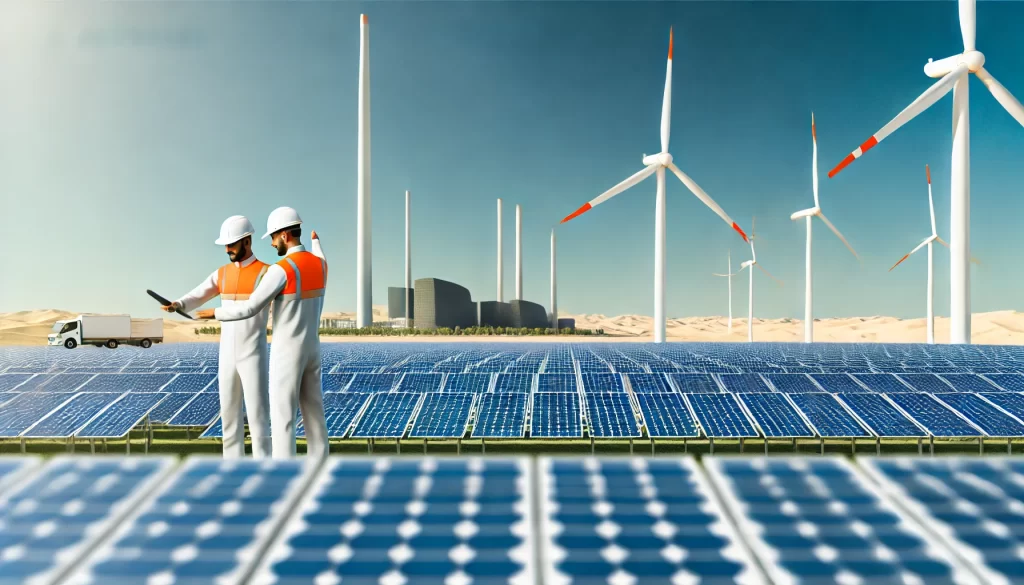
Conclusion
The Abu Dhabi energy project is a crucial part of the UAE’s strategy to ensure sustainable and environmentally friendly energy production. From solar power and nuclear energy to smart grids and energy efficiency, Abu Dhabi is leading the way in the global transition to clean energy. With landmark projects like Noor Abu Dhabi and Al Dhafra Solar, and forward-looking entities like Masdar, the emirate is not only transforming its own energy landscape but also contributing to international efforts to combat climate change.
As the Abu Dhabi energy project continues to grow and evolve, it will play a vital role in shaping the future of energy, both in the UAE and around the world. By embracing renewable energy, promoting energy efficiency, and investing in cutting-edge technologies, Abu Dhabi is paving the way for a sustainable and prosperous future.

